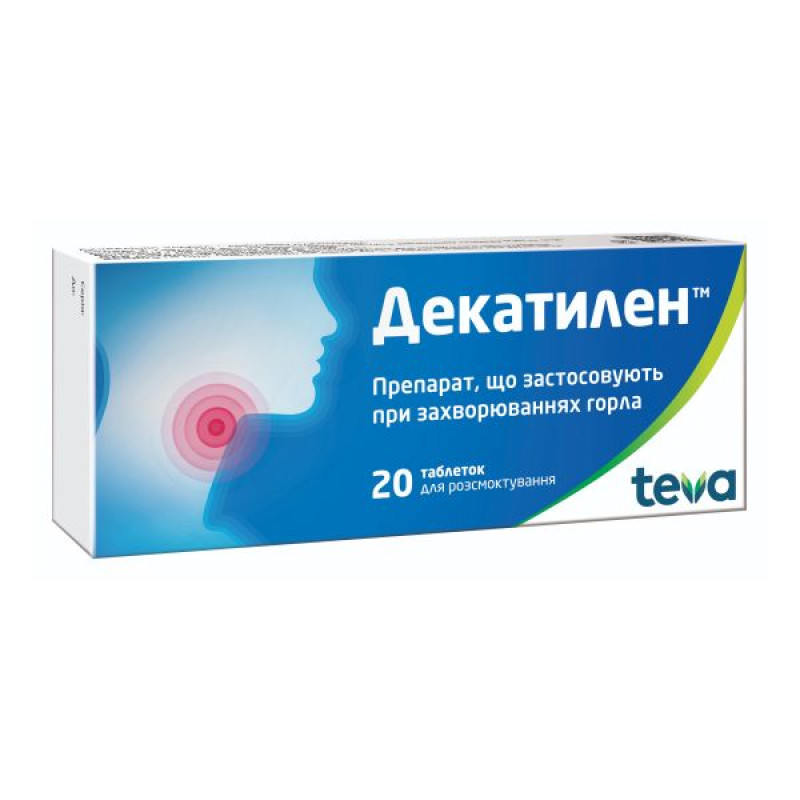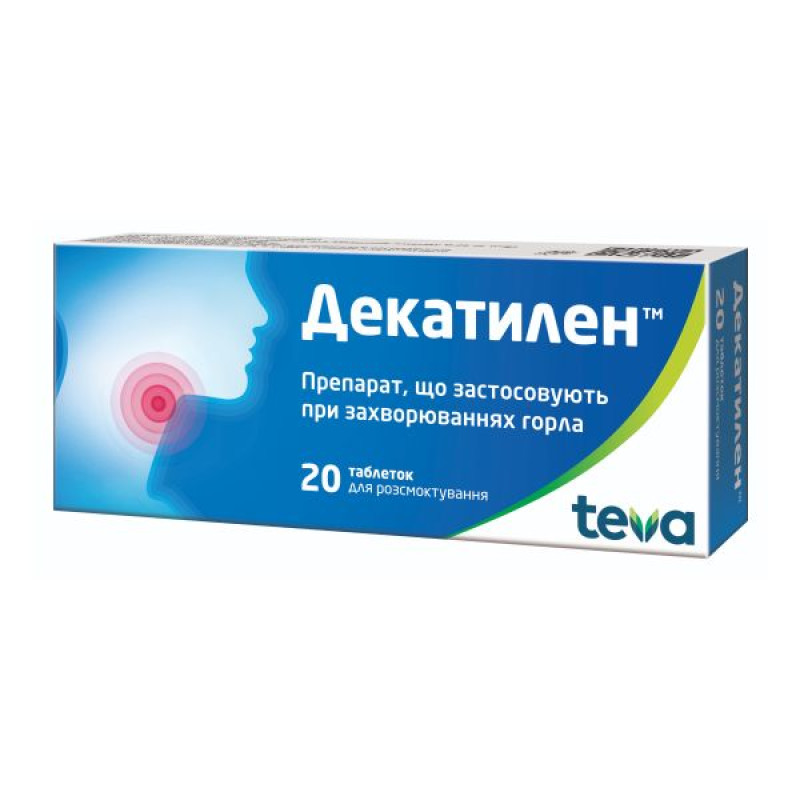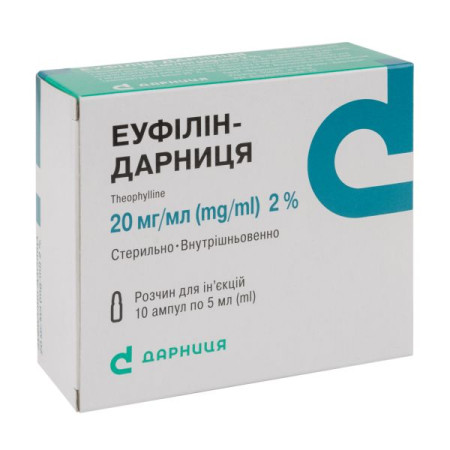Decatilen lozenges No. 20

Instructions for Decatilen lozenges No. 20
Composition
active ingredients: dequalinium chloride, dibucaine hydrochloride;
1 lozenge contains dequalinium chloride 0.25 mg, dibucaine hydrochloride 0.03 mg;
excipients: sorbitol (E 420), talc, magnesium stearate, colloidal anhydrous silicon dioxide, peppermint flavoring, peppermint oil.
Dosage form
Tablets for resorption.
Main physicochemical properties: white round lozenge tablets, beveled on both sides, with a score on one side and an imprint of "D" on the other side.
Pharmacotherapeutic group
Drugs used in throat diseases. ATX code R02A.
Pharmacological properties
Pharmacodynamics.
As a bactericidal and fungistatic agent, dequalinium chloride acts on microorganisms that cause mixed infections of the oral cavity and throat. The spectrum of action of this local chemotherapeutic agent is broad and includes most gram-positive and gram-negative bacteria, as well as fungi, spirochetes and pathogenic microorganisms that cause mixed infections of the oral cavity and throat. The accumulation of dibucaine hydrochloride in the body relieves the pain symptom that accompanies infections of the oral cavity and throat.
Microorganisms resistant to dequalinium chloride are unknown.
Does not cause caries.
Pharmacokinetics.
The main active ingredient is absorbed in very small amounts.
Indication
Local treatment of acute inflammatory diseases of the oral cavity and throat: gingivitis, ulcerative and aphthous stomatitis, tonsillitis, laryngitis and pharyngitis. Decatilen™ is also recommended for use in the presence of unpleasant breath odor.
Decatilen™ can be used in cases of mixed infection of the oral cavity and throat (on the recommendation of a doctor); as an adjuvant in the treatment of catarrhal angina, lacunar angina and Plaut-Vincent angina; in case of candidiasis of the oral cavity and pharynx.
Recommended in the postoperative period after tonsillectomy and tooth extraction.
Contraindication
Hypersensitivity to any of the ingredients of the drug. Allergy to quaternary ammonium compounds (e.g. benzalkonium chloride).
Interaction with other medicinal products and other types of interactions
The antibacterial activity of dequalinium is reduced when used simultaneously with anionic surfactants, for example, toothpaste. The use of the drug should not be combined with the intake of cholinesterase inhibitors.
Application features
Since the drug does not contain sugar, it is suitable for use by diabetics.
The drug contains sorbitol, so it should not be used in patients with rare hereditary diseases such as fructose intolerance syndrome. Use with caution in patients with low plasma cholinesterase levels.
Use during pregnancy or breastfeeding
Pregnancy
Controlled studies have not been conducted. In these circumstances, the drug can be used during pregnancy after consultation with a doctor if the therapeutic effect outweighs the possible risk to the fetus.
Breastfeeding period
No clinical studies have been conducted on the penetration of active substances into breast milk, therefore the drug is not recommended for use during breastfeeding.
Ability to influence reaction speed when driving vehicles or other mechanisms
No studies have been conducted on the effects of the drug on the ability to drive and use machines. However, the possibility that the drug may have any negative effects in this regard is very unlikely.
Method of administration and doses
Adults and children aged 12 and over
Prescribe 1 tablet every 2 hours, after the symptoms of inflammation have subsided - 1 tablet every 4 hours.
For children aged 4 and over
Prescribe 1 tablet every 3 hours, after the symptoms of inflammation have subsided - 1 tablet every 4 hours.
The maximum daily dose is 10-12 tablets during the acute phase and 6 tablets after the inflammatory symptoms disappear.
The tablets should be sucked slowly, without chewing. The duration of treatment is determined by the doctor individually. The patient should consult a doctor if the symptoms have not disappeared or worsened after 5 days of treatment with the drug.
Children
The drug in this dosage form should not be prescribed to children under 4 years of age.
Overdose
The drug is generally well tolerated. In case of overdose, nausea, vomiting, and in rare cases, ulcers and necrosis of the esophagus are possible.
Treatment of overdose is symptomatic; if necessary, enveloping agents can be used.
Do not induce vomiting or perform gastric lavage.
Adverse reactions
Sometimes hypersensitivity reactions may occur after using the drug, such as rash, itching, burning sensation, irritation of the mucous membrane of the mouth and throat. In rare cases, namely in case of abuse, ulceration and necrosis may occur. In case of any unusual reactions, the drug should be discontinued and a doctor should be consulted regarding further therapy.
Expiration date
3 years.
Storage conditions
Store at a temperature not exceeding 25 °C out of the reach of children.
Packaging
10 lozenges in blisters; 2 or 3 or 4 blisters in a cardboard box.
Vacation category
Without a prescription.
Manufacturers
Acino Pharma AG.
Balkanfarma-Razgrad JSC.
Location of manufacturers and addresses of their place of business.
Birsweg 2, 4253 Lisberg, Switzerland.
68 April Uprising Blvd., Razgrad 7200, Bulgaria.
There are no reviews for this product.
There are no reviews for this product, be the first to leave your review.
No questions about this product, be the first and ask your question.








